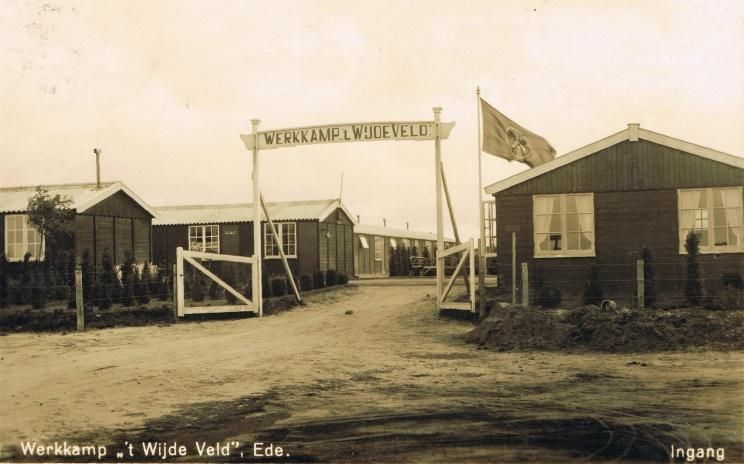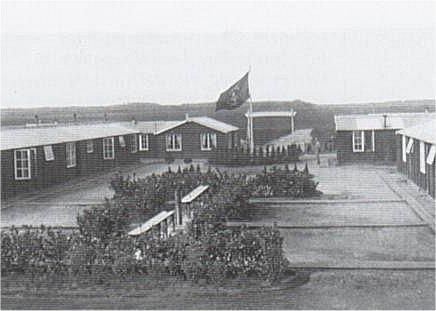September 1944: Fighting at the Wijde Veld labour camp
In March 1935, ’t Wijde Veld labour camp, situated at the edge of Ginkel Heath, opened its doors to unemployed youths. The labour camp had six huts and its residents did road maintenance work and built cycle paths for the Heidemaatschappij, the local office of works.
The camp was abandoned at the start of the Second World War, but in March 1944, it was once again inhabited, this time by 109 evacuees (18 families) from Stavenisse. Their island of Tholen had been flooded by the German occupiers, and now they formed a small Zeeland community at the camp. The men worked for the Heidemaatschappij while a small school was set up for the children.
The liberation of Europe began with the Allied invasion in Normandy (6 June 1944). After fierce fighting in the summer, the majority of France and Belgium were rapidly liberated at the start of September. Operation Market Garden began on Sunday, 17 September 1944, the start of a planned Allied campaign to invade Germany from the Belgian border by way of the central Netherlands. As part of this large-scale plan, the bridges over the Rhine at Arnhem needed to be taken by British airborne units. Today, this operation is also known as the Battle of Arnhem.
That Sunday afternoon, the folk from Zeeland witnessed British paratroopers landing at Renkum and British gliders landing at Wolfheze. A Scottish unit, which had landed by glider, had the task of securing Ginkel Heath because this area was a designated drop zone for the 4th Parachute Regiment the following day. The Scots occupied the Heath and the labour camp as well, where they discovered the civilians.
Photo below: Youth work camp ’t Wijde Veld. Sourse: Nationaal Archief
During the night, units of the 3rd SS Guard Battalion (numbering about 750 men, mostly Dutch soldiers in German military service) fought fiercely to recapture the Heath. Next morning, they approached the foxholes dug by the Scottish troops at the eastern edge of the wood. A firefight broke out, with the huts being caught directly in the crossfire.
The residents fled during a lull in the fighting. Seven Scottish soldiers were killed in this engagement and six were wounded. One Zeeland civilian was also killed, while another was seriously wounded.
Twenty-three soldiers were taken prisoner by the Germans and moved to Ede. The Zeeland folk were also sent to Ede by the Germans.
On the afternoon of 18 September, the 4th Parachute Regiment, totalling almost 1,900 men, dropped on Ginkel Heath. They were met with heavy defensive fire from the Germans: some 300 British soldiers were killed, wounded, went missing or were taken prisoner.
Do you want to experience this story on its original location? Walk south from the sheep pen on the Zuid Ginkel and visit the information panel on the Wijde Veldweg.

